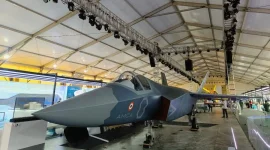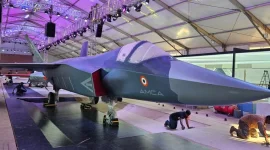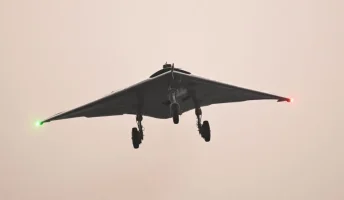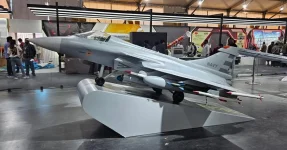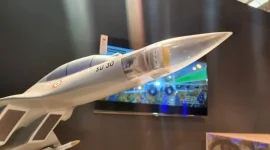- Views: 6K
- Replies: 43

India's Aeronautical Development Agency (ADA) is refining the design of its Tejas Mk2 fighter jet based on crucial wind tunnel tests conducted at the French National Aerospace Research Center (ONERA), according to reports.
The tests, which simulated real-world flight conditions, provided critical data on the aircraft's aerodynamic performance, particularly focusing on the air intake and canards.
ONERA, a world leader in aerospace research and development, played a key role in analyzing the Tejas Mk2's airflow dynamics and performance parameters. The wind tunnel tests focused on evaluating how the air intake and canards perform under stress, allowing engineers to identify areas for improvement.
Canards, small forward-mounted control surfaces, are incorporated into the Tejas Mk2 to enhance maneuverability and control at higher angles of attack. The ONERA tests provided valuable data on their influence on the jet's aerodynamic profile, enabling ADA engineers to fine-tune their positioning and shape for maximum effectiveness. This is expected to improve the aircraft's agility, stability, and handling in combat situations.
The air intake system, vital for ensuring optimal airflow to the engine, was also a key focus. The tests provided insights into optimizing the Tejas Mk2's air intake for improved efficiency, reducing drag and enhancing airflow even at high speeds and altitudes. These refinements are expected to boost performance in both supersonic and subsonic flight regimes.
The findings from ONERA will be incorporated into the next batch of Tejas Mk2 prototypes as ADA prepares the aircraft for its first flight, expected in the coming years. These enhancements are expected to improve the fighter’s aerodynamic efficiency and contribute to its operational effectiveness.
The Tejas Mk2 is an advanced version of the Tejas Light Combat Aircraft (LCA), designed to meet the Indian Air Force's evolving operational needs. Featuring a larger fuselage, more powerful GE-F414 engines, increased payload capacity, and advanced avionics, the Mk2 represents a significant upgrade from its predecessor. The addition of canards and other design enhancements aim to significantly boost the aircraft's maneuverability, speed, and combat effectiveness.
This development comes as India continues to strengthen its domestic defence industry and reduce its reliance on foreign suppliers. The Tejas Mk2 is expected to play a crucial role in the Indian Air Force's future, providing a domestically produced, advanced fighter jet capable of meeting the challenges of modern aerial warfare.

